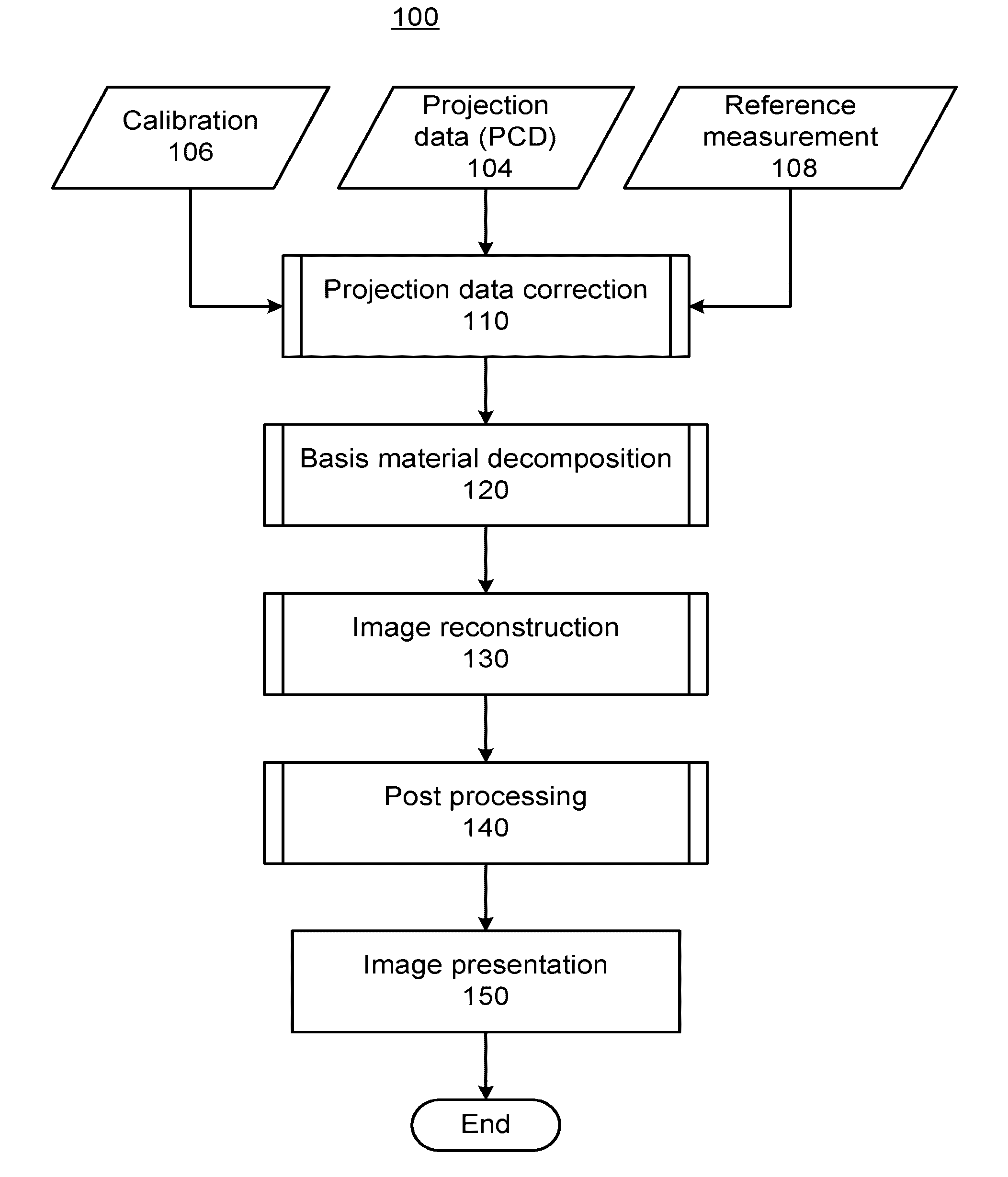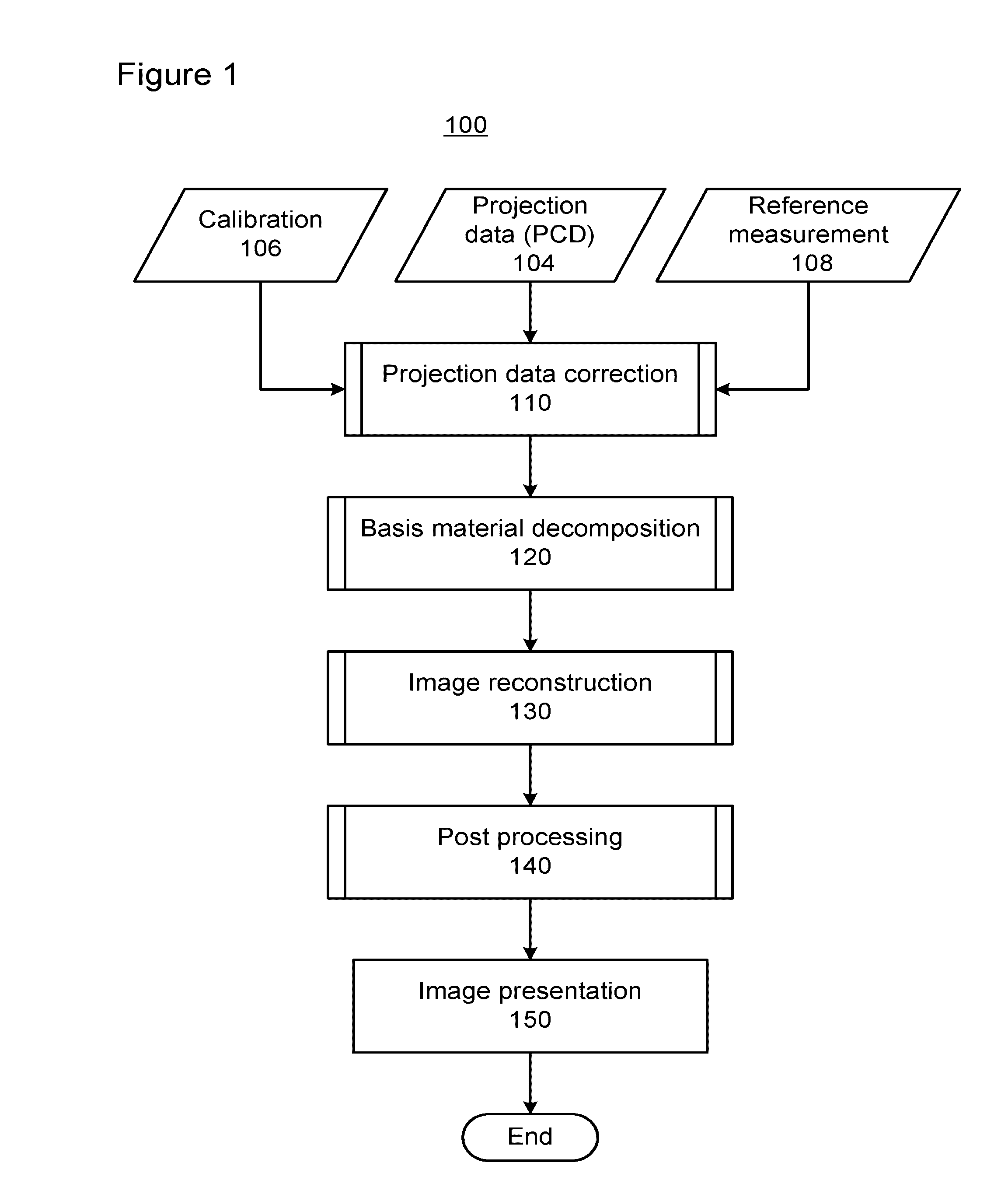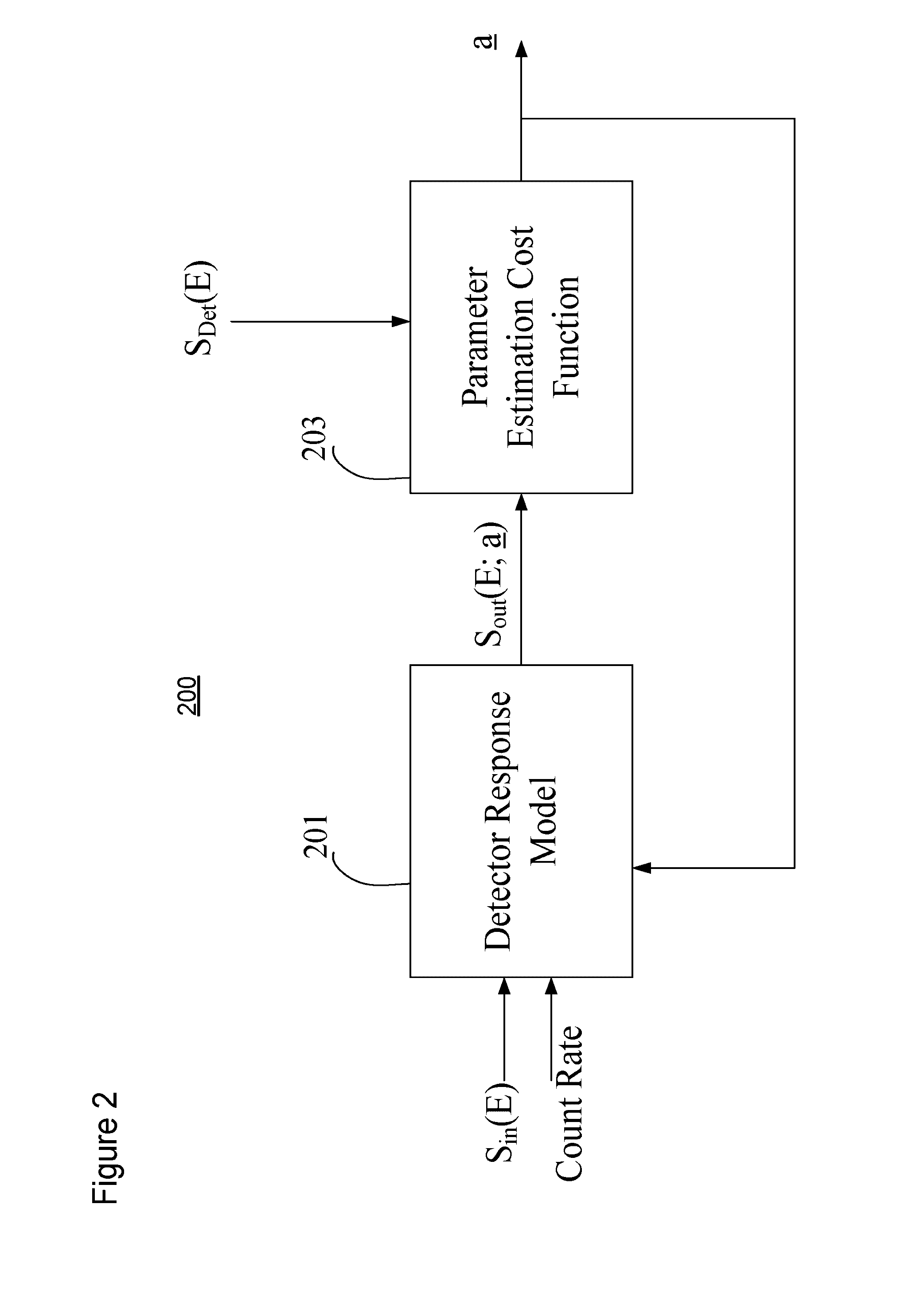Pre-reconstruction calibration, data correction, and material decomposition method and apparatus for photon-counting spectrally-resolving x-ray detectors and x-ray imaging
a detector and x-ray imaging technology, applied in the field of pre-reconstruction calibration, data correction, and material decomposition methods and apparatuses for photon counting spectrally-resolving x-ray detectors and x-ray imaging, can solve the problems of loss of photon count and a distortion of photon energy, artifacts in the reconstructed image, and measurement of photon energy cannot be uniquely related to incident photon energy
- Summary
- Abstract
- Description
- Claims
- Application Information
AI Technical Summary
Benefits of technology
Problems solved by technology
Method used
Image
Examples
Embodiment Construction
[0027]Referring now to the drawings, wherein like reference numerals designate identical or corresponding parts throughout the several views, FIG. 1 shows a flow diagram of a method for reconstructing an image of an object OBJ based on a series of projection measurements of the object OBJ performed at different projection directions (i.e., computed tomography (CT) using projective measurements). The data processing is a product of three inputs, including: calibration values 106, projection data 104, and reference measurement values 108. The projection data have multiple spectral components, making it compatible with material decomposition based on the different spectral absorption characteristics of high-Z and low-Z materials (i.e., greater contribution of photoelectric absorption for bone (high-Z) than for water (low-Z)). In addition to being applicable to CT applications as shown in FIG. 1, processes 110 and 120 are also applicable to non-CT applications involving projective measu...
PUM
 Login to View More
Login to View More Abstract
Description
Claims
Application Information
 Login to View More
Login to View More - R&D
- Intellectual Property
- Life Sciences
- Materials
- Tech Scout
- Unparalleled Data Quality
- Higher Quality Content
- 60% Fewer Hallucinations
Browse by: Latest US Patents, China's latest patents, Technical Efficacy Thesaurus, Application Domain, Technology Topic, Popular Technical Reports.
© 2025 PatSnap. All rights reserved.Legal|Privacy policy|Modern Slavery Act Transparency Statement|Sitemap|About US| Contact US: help@patsnap.com



